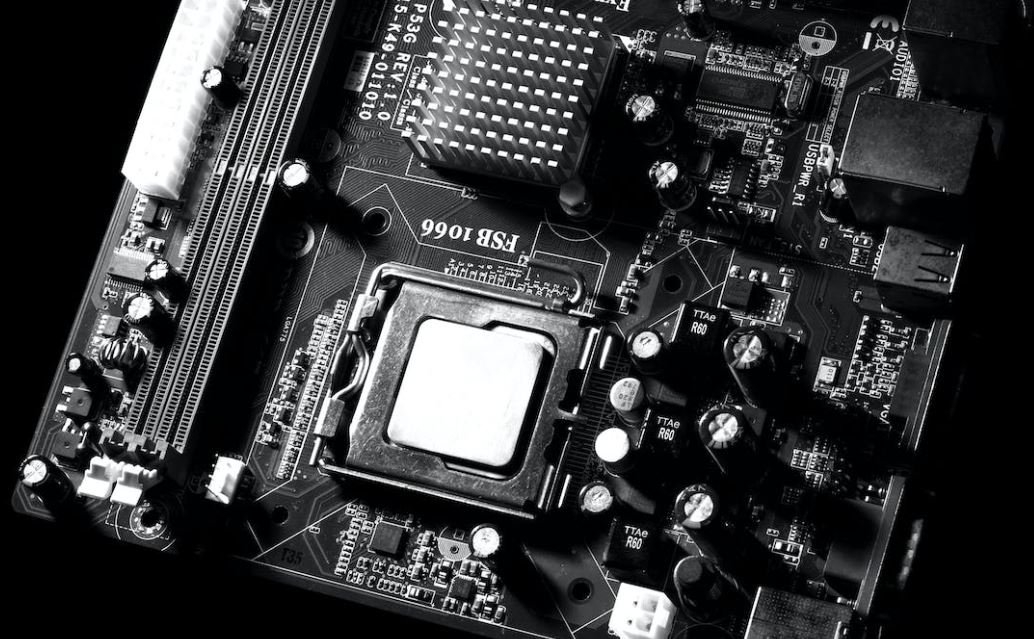Production Rules in AI
Artificial Intelligence (AI) is revolutionizing numerous industries by enabling machines to perform tasks that normally require human intelligence. One of the key components in AI systems is the use of production rules, also known as if-then rules, which provide a set of instructions for the AI system to make decisions or take actions based on given conditions. Let’s explore how production rules work and their significance in AI applications.
Key Takeaways
- Production rules, also called if-then rules, are used in AI systems to make decisions or take actions based on conditions.
- They consist of antecedents (conditions) and consequents (actions), allowing AI systems to reason and make logical inferences.
- Production rules enable AI systems to mimic human reasoning, making them powerful tools for problem-solving and decision-making.
Overview
**Production rules** are a fundamental part of expert systems and other AI applications. They consist of two main components: the **antecedent** and the **consequent**. The antecedent describes the condition or set of conditions that must be satisfied for the rule to be triggered, while the consequent specifies the actions to be taken when the conditions are met. *These rules allow AI systems to reason and make logical inferences based on given data.*
AI systems utilizing production rules can be thought of as having a collection of rules that act as a knowledge base. When presented with new data or a situation, the system examines the rules in its knowledge base and applies the ones that match the conditions. This process is known as **rule matching** and is often done using **pattern matching** techniques.
Each production rule can be considered as a piece of knowledge that the AI system uses to make decisions. By combining multiple rules, the system can perform complex reasoning and solve problems. Furthermore, production rules can be easily modified or expanded, allowing AI systems to adapt and learn over time. *This flexibility makes production rules a powerful tool in AI applications.*
Role of Production Rules in AI
Production rules play a critical role in AI systems, allowing them to mimic human reasoning and decision-making processes. The use of production rules provides several advantages:
- **Interpretability**: Production rules are easily interpretable by humans, letting us understand and validate the decision-making process of AI systems.
- **Scalability**: The modular nature of production rules makes it possible to add and remove rules without impacting the entire system, enabling easy scalability.
- **Rule-based reasoning**: AI systems can perform rule-based reasoning and make decisions by evaluating the conditions specified in production rules.
- **Transparency**: Production rules allow AI systems to provide explanations for their decisions, increasing transparency and building trust with users.
Examples
Let’s consider a simple example to illustrate the use of production rules in an AI system for weather forecasting:
| Antecedent (Conditions) | Consequent (Actions) |
|---|---|
| If the temperature is high AND the humidity is low AND the wind speed is moderate, | Then predict a clear and sunny day |
| If the temperature is high AND the humidity is high, | Then predict a hot and humid day |
| If the temperature is low AND the wind speed is high, | Then predict a cold and windy day |
In this example, the AI system applies production rules based on the observed temperature, humidity, and wind speed to predict the weather conditions. The system matches the conditions in the rules to the given data and triggers the consequent actions accordingly. *By utilizing production rules, the AI system can make accurate weather predictions based on the available data.*
Final Thoughts
Production rules are a crucial component in AI systems, providing a framework for decision-making and problem-solving. They enable AI systems to reason, make logical inferences, and mimic human thinking processes. *With the use of production rules, AI systems can process complex data sets and make accurate predictions or decisions, making them invaluable in various domains of applications.*

Common Misconceptions
Paragraph 1
One common misconception about production rules in AI is that they can solve all problems. While production rules are powerful and can be used to automate decision-making processes, they are not a magic solution to all problems. It is important to understand that production rules can only address problems that can be represented in a rule-based format.
- Production rules are not suitable for solving complex problems with incomplete or uncertain information.
- They require careful and thorough knowledge representation to be effective.
- Production rules do not possess learning capabilities, so they cannot adapt to new situations without explicit modification.
Paragraph 2
Another misconception is that production rules always produce optimal solutions. In reality, production rules are designed to make decisions based on predefined conditions and actions, which may not always lead to the most optimal outcome. While rules can be designed to prioritize certain actions or conditions, they do not guarantee optimality in all cases.
- Production rules can lead to suboptimal decisions if the rule base is incomplete or if the rules are not properly defined.
- Rules are often based on expert knowledge, which may not always be the most up-to-date or accurate.
- In some cases, rule conflicts may arise, leading to unpredictable or undesired outcomes.
Paragraph 3
Many people also mistakenly believe that production rules in AI are inflexible and cannot handle complex scenarios. While production rules are often associated with simple if-then statements, they can handle complex scenarios by chaining multiple rules together or using more sophisticated rule formats.
- Rule chaining allows the combination of multiple rules to address complex scenarios and make more informed decisions.
- Advanced rule formats, such as fuzzy logic or probabilistic rules, can handle uncertainty and imprecise information.
- Production rule systems can incorporate knowledge from multiple domains to handle complex problems that require interdisciplinary expertise.
Paragraph 4
Some people assume that production rules in AI are static and cannot be modified or updated easily. In reality, production rule systems can be designed to allow dynamic rule modification and updates. This flexibility enables the system to adapt to changing conditions and improve rule effectiveness over time.
- Dynamic rule modification allows rules to be added, modified, or deleted without disrupting the system’s operation.
- Rule-based systems can incorporate feedback or data-driven updates to improve rule accuracy and efficiency.
- Intelligent rule management techniques, such as rule priority adjustments or rule learning, can enhance the system’s performance and adaptability.
Paragraph 5
Lastly, there is a misconception that production rule systems are computationally expensive and slow. While it is true that complex rule bases or inefficient rule execution mechanisms can impact performance, production rule systems can be optimized to achieve efficient and fast decision-making.
- Techniques such as rule indexing or rule caching can speed up the rule matching process.
- Efficient algorithms can reduce the computational complexity of evaluating large rule sets.
- Parallel processing or distributed systems can be utilized to handle large-scale rule-based systems efficiently.

Evolution of Production Rules in AI
Production rules are a fundamental concept in the field of Artificial Intelligence, enabling machines to make logical inferences and decisions. Over the years, production rules have evolved, becoming more sophisticated and powerful. Here we present ten tables that illustrate the various aspects and advancements in the domain of production rules.
Rule-Based Systems in Different Domains
Production rules have found applications in diverse domains, ranging from healthcare to finance to robotics. The table below showcases notable examples of rule-based systems and the domains they operate in.
| Rule-Based System | Domain |
|---|---|
| MYCIN | Medical Diagnosis |
| DENDRAL | Chemical Analysis |
| SPARK | Financial Analysis |
| ROBOTIS | Robotic Assembly |
Advantages of Production Rules
Production rules offer several advantages over other AI approaches. They are interpretable, allow knowledge representation, and facilitate intelligent decision-making. The table below highlights some key advantages of using production rules in AI systems.
| Advantage | Description |
|---|---|
| Interpretability | Rules are human-readable and understandable. |
| Knowledge Representation | Rules express domain-specific knowledge effectively. |
| Modularity | Rules are easily maintainable and modifiable. |
| Transparent Decision-Making | Reasoning behind decisions can be traced through rules. |
Types of Production Rule Systems
Production rules can be categorized into different types based on their characteristics and functionalities. The table below presents a classification of production rule systems.
| System Type | Description |
|---|---|
| Forward Chaining | Rules are applied repeatedly until a conclusion is reached. |
| Backward Chaining | Reasoning starts from the goal and works backward. |
| Blackboard System | Allows multiple agents to collaboratively modify rules on a shared knowledge base. |
| Constraint System | Rules enforce constraints on variables and relationships. |
Efficiency Metrics in Rule-Based Systems
Efficiency is a key consideration when designing and evaluating rule-based systems. The table below showcases various metrics used to measure and optimize the efficiency of production rules.
| Metric | Description |
|---|---|
| Rule Coverage | Percentage of cases covered by the rules. |
| Inference Time | Time taken to derive conclusions from rules. |
| Rule Conflicts | Instances where rules contradict or overlap. |
| Memory Usage | Amount of memory required to store rule-related data. |
Integration of Machine Learning with Production Rules
Combining the benefits of machine learning with production rules can enhance the capabilities of AI systems. The table below highlights different techniques for integrating machine learning into rule-based systems.
| Technique | Description |
|---|---|
| Rule Induction | Discovering rules from data using machine learning algorithms. |
| Rule Combination | Combining learned rules with existing production rules. |
| Rule Pruning | Removing redundant or conflicting rules based on ML insights. |
| Rule Weighing | Assigning probabilities or significance to individual rules. |
Expert Systems Utilizing Production Rules
Expert systems, leveraging production rules, are widely used to provide specialized knowledge and advice in various domains. The following table showcases examples of expert systems and their specific applications.
| Expert System | Application |
|---|---|
| Deep Blue | Chess Playing |
| COACH | Tennis Strategy |
| PREDICT | Weather Forecasting |
| PATHFINDER | Spacecraft Navigation |
Future Challenges in Production Rule Systems
Despite their successes, production rule systems still face challenges that require further research and innovation. The table below outlines some key challenges in the development and deployment of production rule systems.
| Challenge | Description |
|---|---|
| Scalability | Efficient handling of large rule sets and complex domains. |
| Rule Acquisition | Automatically capturing knowledge from experts. |
| Explanation Generation | Providing understandable explanations for inference results. |
| Learning from Data | Improving rule performance through data-driven insights. |
Conclusion
Production rules have played a significant role in the development of AI systems, enabling logical reasoning, decision-making, and knowledge representation. As demonstrated by the tables above, the evolution of production rules has led to their diverse applications across domains, their advantages in transparency and modularity, and their integration with machine learning techniques. Expert systems leveraging production rules have also found success in providing specialized knowledge. However, challenges persist, and future research aims to address scalability, rule acquisition, explanation generation, and data-driven learning. The evolution of production rules continues, driving AI towards more intelligent and efficient systems.
Frequently Asked Questions
What are production rules in AI?
Production rules in AI are a type of representation used to model knowledge or logical reasoning in artificial intelligence systems. They consist of a set of conditional statements, also known as “if-then” rules, that define the actions or inferences to be taken depending on certain conditions or inputs.
How do production rules work in AI systems?
In AI systems, production rules work by evaluating the conditions specified in the rules against the given input or state of the system. If the conditions are met, the corresponding actions defined in the rules are triggered or the inferences are made. This process is typically performed in an iterative manner until a desired outcome or conclusion is reached.
What are some advantages of using production rules in AI?
Using production rules in AI offers several advantages, including:
- Modularity: Production rules can be easily added, modified, or removed without affecting the overall system.
- Transparency: The reasoning process and the actions taken by the system can be easily understood and explained.
- Flexibility: Changes in the rules allow for adaptability of the system to new situations or requirements.
- Scalability: Production rules can accommodate large amounts of knowledge and complex reasoning.
What are some limitations of using production rules in AI?
While production rules have their benefits, they also have some limitations, such as:
- Inefficiency: Evaluating a large number of rules can slow down the system’s performance.
- Conflating logic and knowledge: Rules may mix logical reasoning with factual knowledge, making it challenging to separate them.
- Complexity management: Maintaining and managing a large number of rules can become difficult and time-consuming.
How are production rules represented in AI systems?
Production rules are usually represented using if-then statements. Each rule consists of a condition (the “if” part) and an action or inference (the “then” part). The conditions are typically expressed in a logical or boolean form, while the actions can be any desired actions or conclusions.
What is the process of developing production rules in AI?
The process of developing production rules in AI typically involves:
- Identifying the problem or knowledge domain to be modeled.
- Identifying the relevant facts, assumptions, and rules for the system.
- Formulating the rules using appropriate logical expressions.
- Testing and refining the rules through iterative cycles of evaluation and revision.
What are some real-world applications of production rules in AI?
Production rules find applications in various fields, including:
- Expert systems: AI systems that emulate human expertise in specific domains.
- Diagnosis and decision support: Systems that assist in medical diagnosis or decision-making processes.
- Business rules engines: Tools for automating complex business rules and workflows.
- Intelligent tutoring systems: Systems that provide personalized guidance and feedback for educational purposes.
Can production rules be combined with other AI techniques?
Yes, production rules can be combined with other AI techniques to enhance the capabilities of AI systems. For example, they can be integrated with machine learning algorithms to improve the rules’ accuracy or used in conjunction with knowledge graphs for more comprehensive knowledge representation.
Are there any alternatives to using production rules in AI?
Yes, there are alternative methods for representing knowledge or reasoning in AI systems. Some alternatives include semantic networks, frames, ontologies, neural networks, and Bayesian networks. The choice of representation depends on the specific requirements and characteristics of the problem domain.




